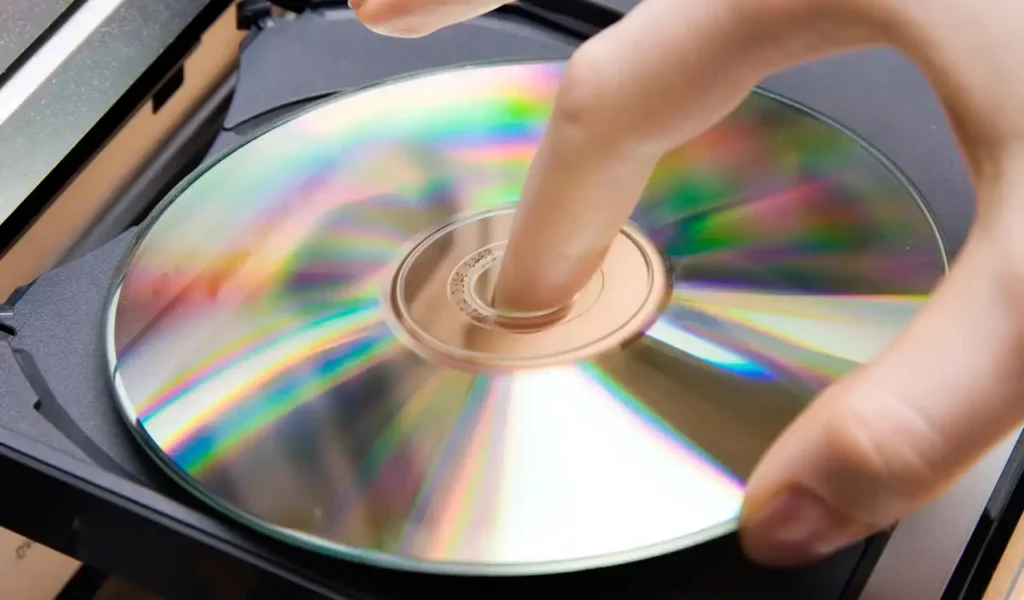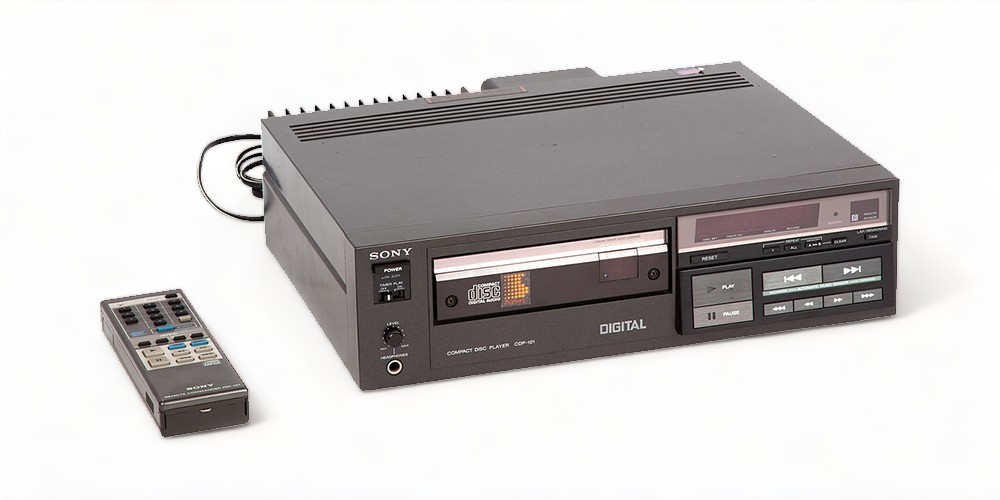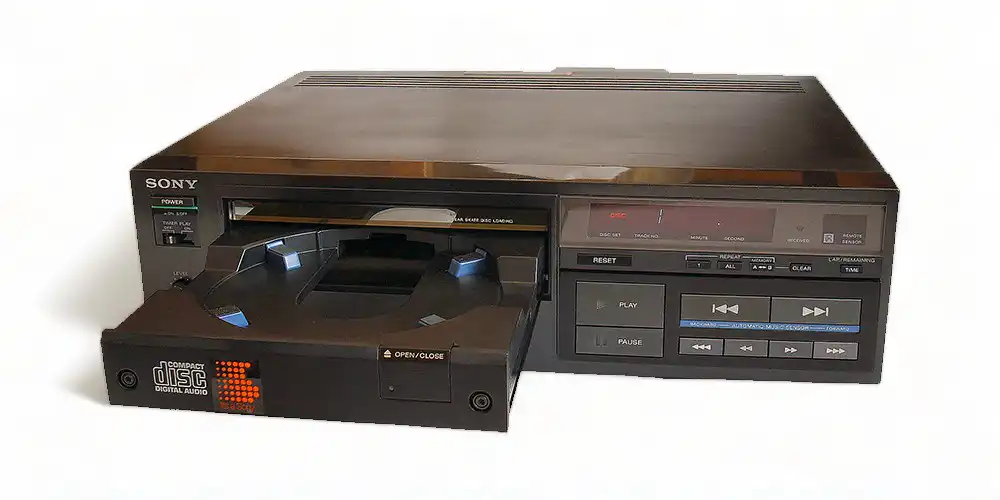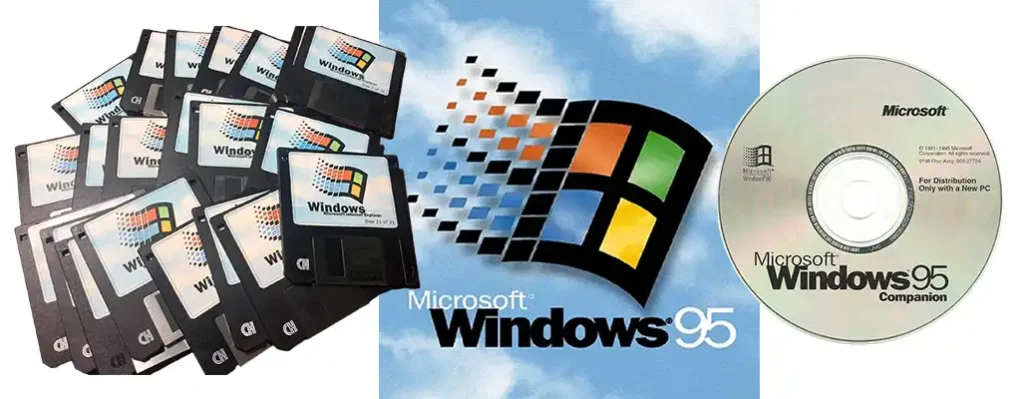
What is a compact disc? A question that seems strange to ask for people who were born in the 90s or before, but that is becoming common for the newer generations. The compact disc, or CD, arrived in the 80s and was the most popular music storage device throughout the 90s until the 2000s, when its decline started. The format was co-developed by Phillips and Sony to store and play digital audio recordings. In 1982 the first CD Player was introduced on the market, the Sony CDP-101.


The CDs have a diameter of 12 cm (4.7 in) with a 1.5 cm hole in the middle. They are 1.2 mm thick (0.047 in) and are made of poly-carbonate plastic, weighting from 14 to 33 grams. It can hold 74-80 minutes of digital audio. The CD is read using a laser device on a player where the disc spins and a sled moves the laser head along the radius so it can read the tracks.
CDs were later adapted as CD-ROMs to store data. CD-ROMs could hold 650-700 mb of data, which was much more than the typical computer hard drives of that time, that could usually store 10 mb.
Audio CDs
At the time the CD came up, artists used LP records (vinyl records) or K7s to record and sell their albums.
The audio CDs offered many advantages over analog formats such as playing all songs from an album continuously, durability, resistance to to wear and tear, and the capacity to skip to the next song or play it again with the press of a button, something you couldn’t do in a K7 or LP record. Besides that, it had digital, instead of analog audio. This meant that the quality of the sound was clearer and wouldn’t degrade doesn’t matter how many times you used the same disc, what didn’t happen to K7s and LPs, that would degrade overtime.
Another advantage of the CDs was that, at the time of the introduction of the technology, LP records could only hold around 22-26 minutes in each side. The K7 tape could hold up to 90 minutes (45 minutes in each side) but you couldn’t play it continuously. When one side ended, you needed to turn the tape to continue listening.
So the introduction of the CD was a big step as you could record digital audio for up to 80 uninterrupted minutes and, when listening to it, you didn’t have the annoyance of having to turn it on the player to continue listening.
CD-ROM – data storage
With the popularization of the audio CD, the next step was to popularize its use for data storage with the CD-ROM.
At the time, computers usually had hard drives that could hold only 10 mb of data. Floppy disks could hold up to 2.88 mb of data, but the most popular floppy disks at the time could hold only 1.44 mb, as the 2.88 mb format had a very limited market success due to lack of standards.
When buying software, depending on the size of the installation files, you would receive multiple floppy disks with data that 1 CD-ROM could store by itself, as you can see the Windows 95 in the picture below.

So, a disc that could hold up to 700 mb was a huge step. But CD-ROM player prices were very high when it was released around 1985. It cost over U$ 1000 (at the time) and most users couldn’t afford that. The price wouldn’t come down until the 90s, when it became affordable and started coming in the computers, as standard.
With its popularization, soon the CD-Rs (Compact disc recordable) and CD-RWs (Compact disc rewritable) also to get less expensive until they became affordable to most users.
The decline of CDs
By the time CD-Rs and CD-RWs became standard in computers, and we could finally burn our own CDs with the music we wanted to listen, or store data without the need of multiple floppy disks everything changed. The arrival of the flash drive, or pen drive, changed, again, the way we store data. It quickly passed the storage capacity of a CD-ROM turning the latter obsolete.
Music was also changing with the arrival of the MP3 format and the increasing speed of internet connections. When Apple announced its online store to download music legally, other companies followed and, soon, music CDs sales started declining and the way we listen to music completely changed.

